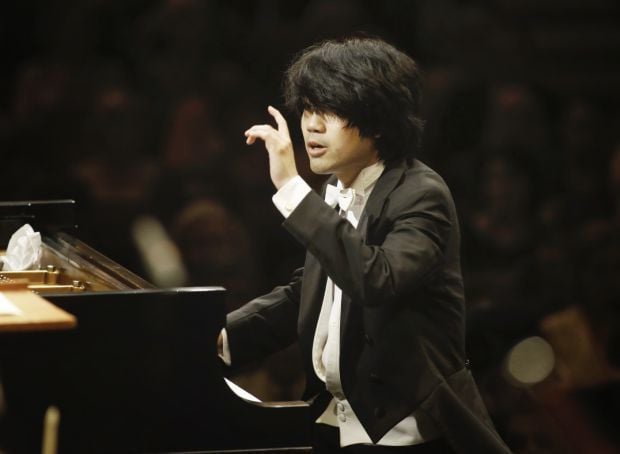
Pianist Sean Chen performed Saint-Saëns’s Piano Concerto No. 2 with the Tucson Symphony Orchestra on Friday, Dec. 6. The concert repeats Sunday, Dec. 8, at Tucson Music Hall.
José Luis Gomez bounded to the podium at the start of the second half of the Tucson Symphony Orchestra concert Friday night and barely took a breath before raising his baton and summoning those fateful four notes: da-da-da-dum!
That opening motif of Beethoven’s stunning Fifth Symphony is often referred to as “fate knocking,” but in TSO Music Director Gomez’s hands it was more like fate rapping on the door with a sense of urgency — dadadadum! — like he was the UPS guy who just left a package on your porch Christmas Eve.
Gomez upped the tempo of the opening motif in keeping with what many scholars of the German composer’s early 19th century symphony believe was Beethoven’s intention.
The bombastic exclamations from the brass and percussion in the first movement served as a bridge to the opening waltz in the second movement that segues into a military-like march, with horns powering and the winds adding their voices to the solemn chest-thumping.
At one point in the performance, the cellos and basses played pizzicato, sounding like actual voices singing “la la la la la.”
It was as if someone on that stage had decided to hum along. It was the neatest thing. While the fate-knocking motif often leads any conversation about Beethoven’s Fifth, it is the final 10 minutes where the magic happens. Gomez coaxed a sense of unbridled passion from the interplay between the strings and winds that dared you not to tap your toes and sway in your seat.
You found yourself mimicking the conductor, waving your hand above your lap in time to the beat as if you were actually guiding the music as the tempo became gloriously fast and furious.
The strings and the winds dueled, with brassy interruptions, providing the heart-check moment of the 35-minute symphony.
That was when the orchestra answered fate’s knock with a sense of humanity and joy that stole your breath.
Gomez opened the concert at Tucson Music Hall with Venezuelan composer Antonio Estevez’s lovely, cinematic “Mediodia en el Llano” before turning the spotlight on guest pianist Sean Chen and French composer Saint-Saëns’s Piano Concerto No. 2.
Chen, who performed with the TSO MasterWorks series in 2015, was impressive as he let his fingers dance, glide and race along the keyboard.
His performance was commanding and thrilling in the piece’s more exuberant passages and deeply intimate and moving when the tempo slowed.
The audience nearly filling the Music Hall rewarded Chen with a standing ovation.
Gomez has devoted the TSO’s 90th season to celebrating Beethoven on the 250th anniversary of his birth.
In all, the orchestra will perform eight of Beethoven’s nine symphonies through April.






